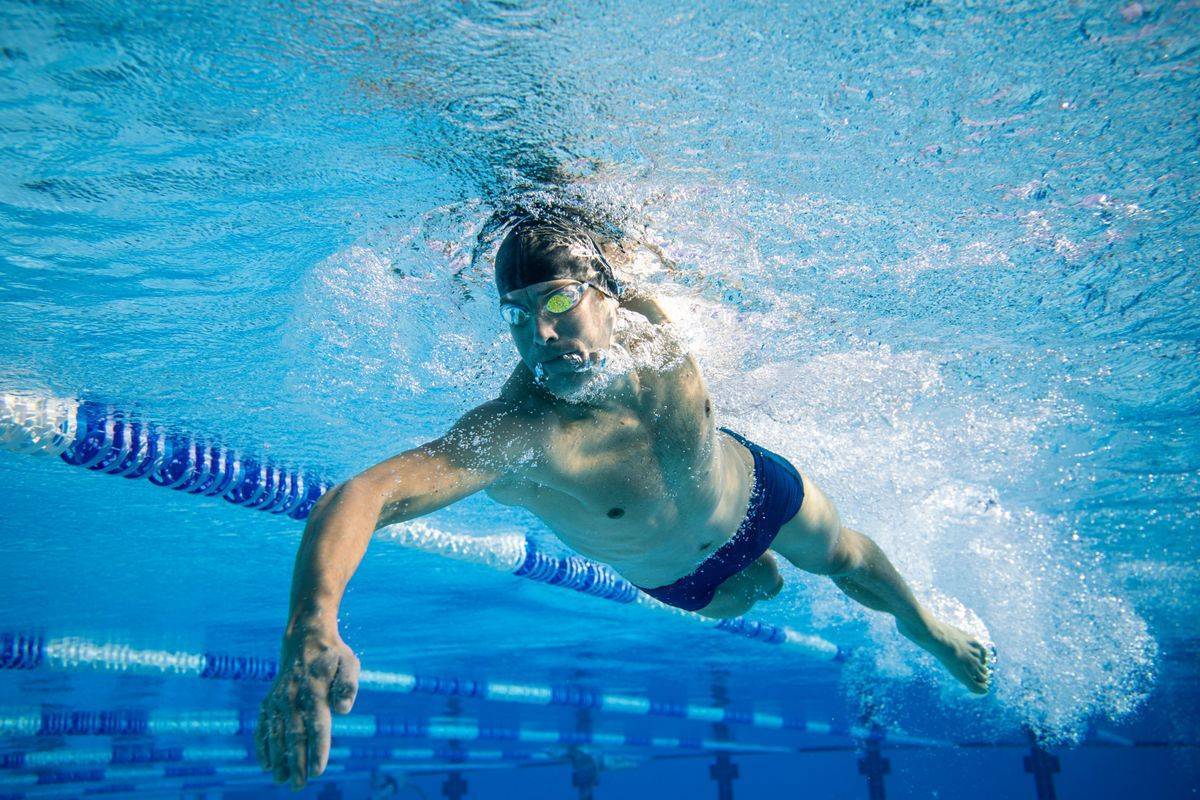Einer der entscheidendsten Faktoren für den Vortrieb beim Schwimmen ist, neben einer guten Wasserlage, der korrekte Armzug. Was so einfach aussieht, erfordert Wissen und Übung. Wir klären, welchen Weg der Arm unter Wasser nehmen sollte, und wie er am besten wieder zurück in die Ausgangslage kommt.
Natürlich ist auch die korrekte Armzugtechnik ein steter Grund zur Diskussion. Eintauchpunkt, Handhaltung, Rückholphase. Selbst die besten Schwimmer zeigen hier keine einheitliche Technik. Ein Patentrezept ist also schwer zu finden. Wichtig ist, die Technik muss reibungslos funktionieren – wie genau das aussieht, das kann individuell durchaus kleine Abweichungen zeigen.
Die Grundpfeiler des korrekten Armzuges
Dennoch sollte jeder Schwimmer die Grundpfeiler des korrekten Armzuges beherrschen und üben. Dass das gar nicht so einfach ist, zeigt schon die Komplexität eines einzelnen Zuges. Denn in immerhin fünf Teile kann man jeden Zug aufteilen: Eintauchphase, Gleitphase, Zugphase, Druckphase und Rückholphase.
Wir beginnen unseren Zug mit dem Eintauchen. Schon hier stellt sich die Frage: Wo soll meine Hand in das Wasser eintauchen? Und in wie sieht meine Handhaltung aus? Ich persönlich finde es gut, wenn man recht früh eintaucht, etwas vor dem Kopf. Genau dann, wenn die Schwerkraft die Hand nach einem hohen Ellenbogen sowieso Richtung Wasser zieht. Doch es kommt viel mehr darauf an, was der Arm nach dem Eintauchen macht. So weit wie möglich nach vorne schieben, lange gleiten und für eine gute Wasserlage sorgen - optimal! Einfach nach unten absinken – keine gute Idee!
Vortrieb erzeugen
Nach dem Eintauchen und Gleiten kommt das Anstellen. Anstellen nennen wir im Schwimmen das Abwinkeln im Ellenbogen. Stellt euch einfach vor, ihr zieht euch eine Mauer hoch. Niemals würdet ihr versuchen diese mit gestrecktem Arm zu erklimmen. Stattdessen stellt ihr den Arm an und zieht euch kraftvoll nach oben. Im Wasser bildet der Unterarm außerdem ein großes Paddle und diese Fläche nutzen wir zusätzlich, um uns aktiv am Wasser entlangzuziehen.
Unser Technik-Tipp: Faustschwimmen. Wer beim Faustschwimmen fast genauso gut vorankommt wie beim normalen Schwimmen, der stellt gut an.
Die Druckphase macht Tempo
Nun kommt der Teil, der uns schnell macht, die Druckphase. Je mehr Kraft wir hier auf das Wasser übertragen können, umso schneller kommen wir voran. Hast du dich schon einmal gefragt wie viele Kilo du bei jedem Zug wegschiebst? 20 Kilogramm? Das wäre schon ganz gut. Olympiateilnehmer drücken bis zu 60 Kilogramm weg, aber die trainieren ja auch acht Stunden am Tag. Kein Grund zur Sorge – aber etwas Zugseiltraining kann nicht schaden.
Um mehr Kraft in der Druckphase auf das Wasser übertragen zu können, kann uns die Rotation helfen (das kannst du in diesem Beitrag nachlesen). Denn mit einer sauberen Rotation kann der Arm die maximale Zuglänge ausnutzen.
Und von vorne!
Wenn der Daumen dann in der Mitte des Oberschenkels angekommen ist, dann ist der Zug zu Ende. Nun den Ellenbogen locker aus dem Wasser heben, den Arm nach vorne schwingen, wieder eintauchen und alles beginnt von neuem.
Trainingseinheit der Woche
300m locker einschwimmen, gerne auch in Rücken und Brust
4 x 200m 50 m Abschlag + 100 m locker Kraul + 50 m zügig
100 locker Rücken (auch da kann man rotieren)
200 m ½ Bahn Faust und ½ Bahn normal Kraul
6 x 50 m Pro Bahn einen Zug weniger Pause 15 Sek
6 x 50 m 1-3 steigern (50 m ruhig, 50 m mittel, 50 m schnell) Pause 15 Sek.
200 locker ausschwimmen




















